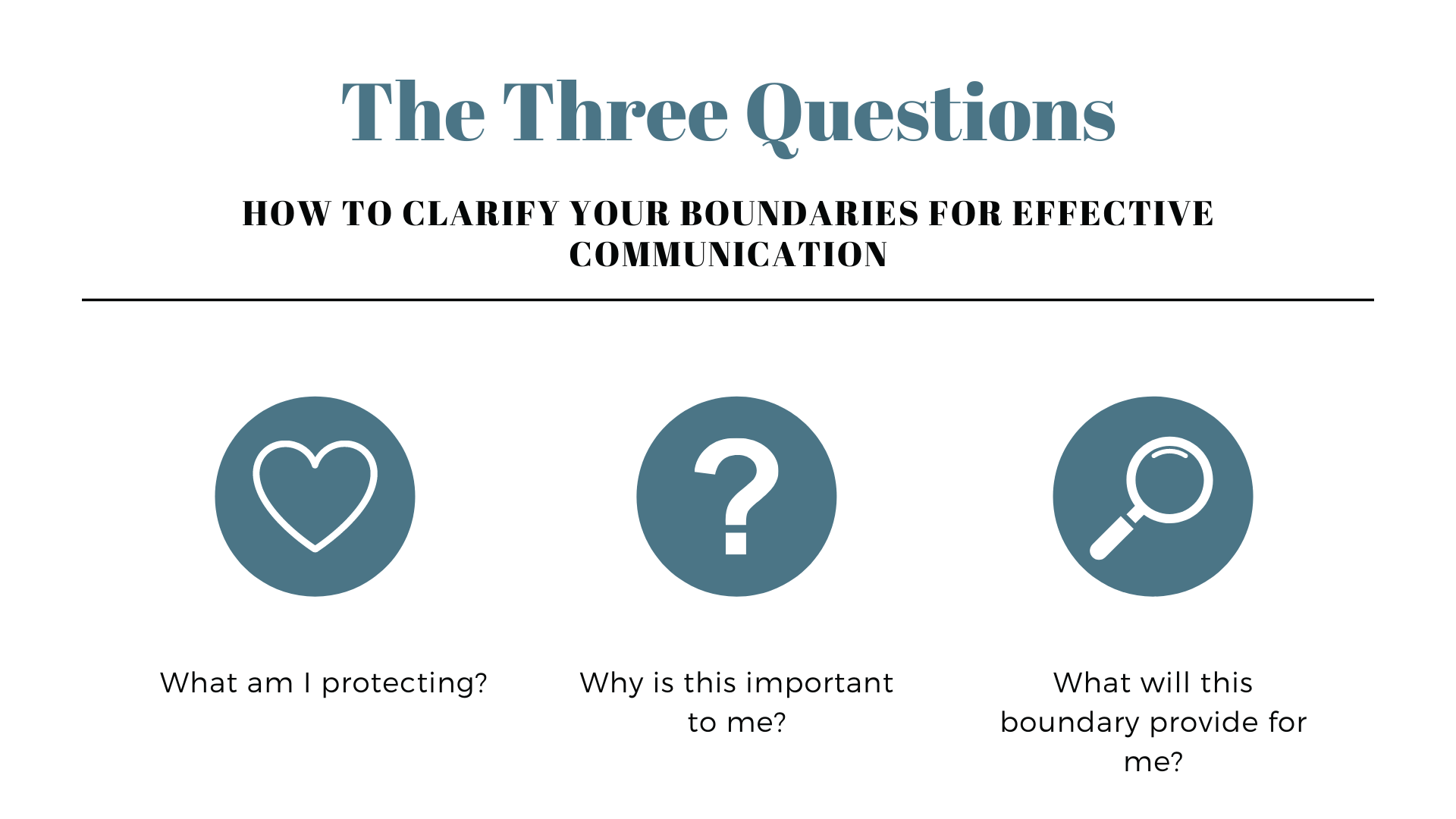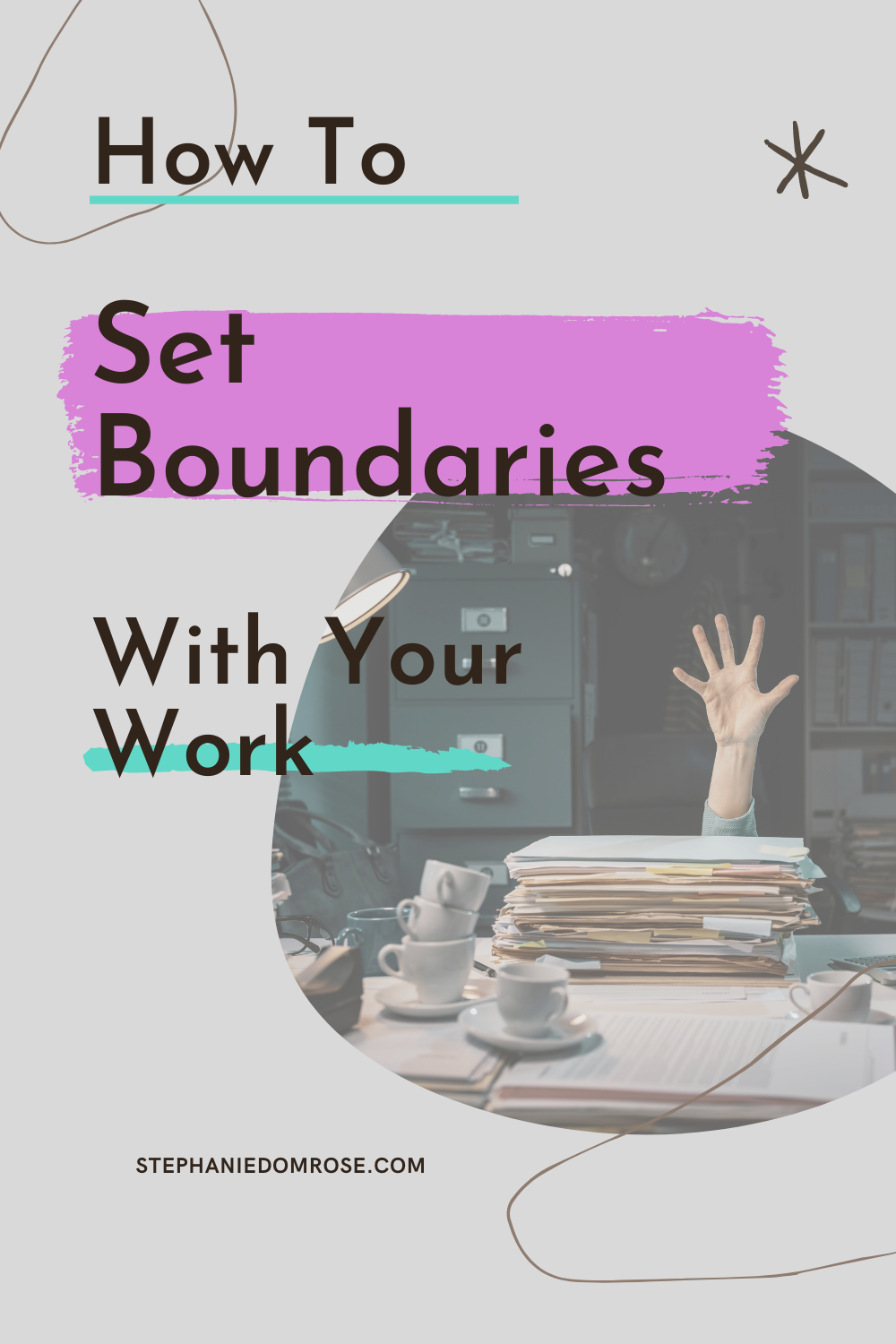This is a long overdue blog post considering how much I talk with my clients about healthy boundaries! Boundaries with your work life don’t come naturally for most of us – especially women. If you’re someone who finds themselves over-performing, never feeling like you’re doing enough or just drained from work in general, this one’s for you!
So, how do you go about setting boundaries with your work? Is work-life balance a real thing?
The honest answers really depend on what you want. Setting boundaries with your work starts with a conversation with YOURSELF about what needs to change. Where do you see your energy leaking? What’s causing you the most stress? If you could change anything about your work-life, what would you change? What do you have the power to change? Once you’ve determined the answers to these questions, you can begin to make some decisions about what boundaries are missing.
As far as work-life balance goes… I really think boundaries can HELP with balance, but they aren’t a cure-all. Anything (yes, even healthy boundaries), taken to an extreme can become unbalanced. The key to creating balance isn’t to find it and then hold onto it forever and never let go. Your life is always changing (as are you), so balance will look different moment to moment.
The key to work-life balance is this: constantly assess your wants and needs, set new boundaries, and let the old ones go. Balance is a moment, not a permanent state, so remember to return to it and assess what you need as you go so you’re not ever swinging so far away from it that you’re feeling lost or drained.
With that in mind, here are 4 steps for setting boundaries with your work:
Determine what you want and need to change
Your boundaries are unique to you, so first you’ll need to determine where and why you need boundaries in the first place. I like to ask a few questions to help determine this: Where is my energy leaking? What tasks zap my focus? What gets most of my attention? What tasks or projects would move the needle in my work, if I had uninterrupted time to work on them?
The key here is to figure out where your boundaries might need to be fortified. If you have certain tasks or people who constantly drain your time, energy and attention, these are GREAT places to start with boundary-setting. The last question in the series above is designed to help you think about what your boundaries might help you accomplish. If you had it your way, wouldn’t work be smooth-sailing? Boundaries are the tool you can use to get your work done on your own terms.
Make a clear plan
Once you’ve identified where you need to set your boundaries, it’s time to make a plan. If you’re going to set boundaries with a co-worker, for example, you might want to strategize by getting really clear about your desired result. The following questions are always a big help in this:
If you don’t need to set boundaries with other people, you may benefit from assessing the boundaries you have with yourself. Do you allow yourself to answer work emails at all hours of the day? If you answered ‘yes’, is that also an area where your energy is leaking? Did I hear another YES?! Then, the boundary plan must include some strategies that will help you stay on-task with your goals. Get really clear about what you want to do. Do you want to limit your email checking to only 8 hours per day and no email on weekends? Write it in your plan. If you don’t get clear, your boundaries will not work.
Communicate/Execute
The third step for setting boundaries with your work is executing your plan. This might sound like a no-brainer, but it’s actually the step that trips most people up. It’s one thing to have an awareness that says: I need to check my email less. It’s something completely different to actually follow-through with it.
Communicating and executing boundaries with your work can be tough, so here are a few tips.
– Use technology to help you
While a lot of us need better boundaries with our tech-use, technology can provide a lot of support in setting and maintaining healthy boundaries. Use your app timers to kick you off social platforms, remove your email app from your phone, or use a program like freedom to keep you off web searching. Taking away the temptations gives you the support you need to get your work DONE on your terms.
– Get clear about what you want
When you’re not sure what you want as a result of your boundary, you’ll get mixed results. Make sure you have an idea of what you want to achieve, otherwise the pull of old habits will get you back to your inbox every two minutes like a moth to a flame.
– Don’t make excuses, instead offer solutions
When you’re communicating your boundaries to others, it can be helpful to connect your reasons to your desired results. Not everyone deserves this type of explanation (I would never go in depth on this with someone I didn’t know), but in familiar work scenarios this tool can be really helpful. For example, instead of saying, ‘I’m sorry, I can’t get to that today because I’m up to my ears in emails’, say ‘I have several projects that are on tight deadlines today, so I will not be able to give your project my attention until Friday’. This communicates the boundary AND offers a solution without giving excuses or explanations.
– Communicate expectations ahead of time, when possible
When you’re dealing with work colleagues, there can be some pushback with boundary-setting. To avoid this resistance, I recommend communicating your expectations and boundaries ahead of time whenever possible. An example would be:
If you’re leading a meeting and have a hard stop of 5pm, voice this at the beginning of the meeting while you’re framing your time together. This sets the expectation and makes it easier to wrap things up later because everyone is on the same page.
Check in on your results
The final step to setting boundaries with your work is to evaluate your results. Regular evaluation will help you tweak your strategies and track your progress. This kind of attention helps you build strong habits and courage with your boundary-setting. Finally, review your progress with compassion. Boundaries are HARD WORK and it will take some time to master them. Keep practicing and you’ll be on your way to having supportive and healthy boundaries with your work!
Want a little extra support with your boundary-setting? Schedule a free call with me and we can make a plan together:


View comments
+ Leave a comment